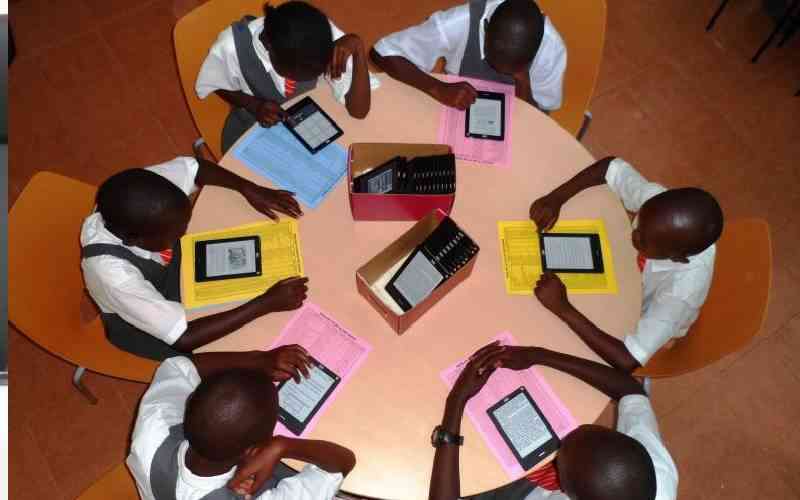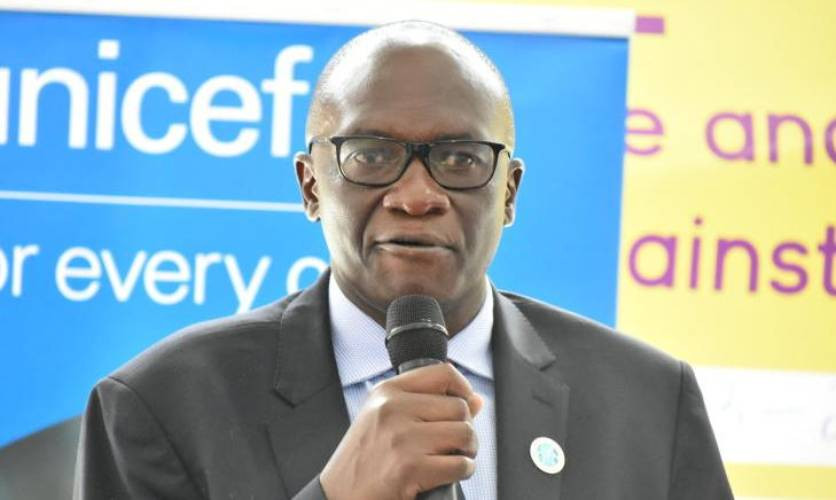Picture a traditional classroom. The image that pops into most people’s heads will bear common traits: a teacher standing at the front of the classroom, a black/white/smart board behind them and students sitting in neat rows.
Today though, this image is radically shifting. If the brief was to picture a classroom in 2020, we would all imagine a student sitting in their living room or bedroom, headphones on, mostly likely in their pajamas, at varying degrees of attentiveness to a teacher speaking to them through their computer or tablet.
Now imagine the classroom of the immediate future: a blended model, with students learning from home, then reinforcing and applying their learning in classroom-based settings, with peer learning, self-paced learning and technology-enhanced learning (instead of technology-enabled) forming the basis of an improved learning model.
This is not just a hastily adapted style of learning, reacting to external circumstances, and bringing the mistakes of old into the learning models of the future. This is an entirely new, deliberate and strategic model that can make learning more effective and individualised.
Blended learning has been a bit of a buzzword in the education space since long before Covid-19 catapulted learning institutions into the world of online and blended learning discussions. Schools and universities were forced to consider their options; whether to continue teaching, whether to offer purely online teaching, or some form of blended learning where possible.
At the Africa Digital Media Institute, we immediately put all teaching staff through rigorous online training certifications from international institutions, and transitioned all content delivery and assessment to online platforms.
However, blended learning offers the opportunity to go well beyond simply delivering traditional content in a new format. It offers the opportunity to create new norms for learning.
“Technology has the capacity to improve efficiency and scale impact in every industry”, says Kareem Farah, writing for the George Lucas Educational Foundation.
Democratising education innovation
While blended learning used to be the reserve of the fanciest, highest-budget institutions that could afford to take risks and invest in online platforms, it is now a necessity for almost every education institution.
With the exception of certain rural, isolated or underfunded schools, almost every classroom pivoted to some form of online or media-based (radio, TV) content delivery at the beginning of 2020. Over the course of this year, most have resumed, at least in part, some form of in-person or blended learning.
For the first time in living memory, educators had to sit down and think through how they could continue to do their job, and innovate or (proverbially) die. This has led to a new thoughtfulness across all levels of education, about how people learn and how we can optimise content delivery and long-term learning, with due attention paid to individual circumstances.
There are schools that allowed children of key workers to continue attending school despite widespread school closures, and schools that have allowed students with health issues, or with family members with health issues, to attend in-person classes remotely so that they can continue to shield from the risks of the virus.
The global realisation that there is no sense behind a ‘one size fits all’ approach has opened up the doors for open-ended innovation.
Learning, re-learning, and mastering
Stay informed. Subscribe to our newsletter
Blended learning has made educators differentiate between different stages of learning.
Learners can engage with a new topic through instructional videos, pre-recorded lessons, reading materials or other content that they can consume in a self-guided and self-paced way. Then they can apply their new knowledge through practical work in the classroom, where they can engage with the educator, and most importantly with other learners.
We are now pursuing this model, whereby online classes involve getting to grips with a topic for the first time, then engaging in in-person small group projects in labs to apply the lessons learned, get real-time feedback from the educator, and re-learn, and eventually master their new knowledge.
More than anything, this new approach makes learners the masters of their own learning, and encourages key skills such as self-discipline, autonomy, and responsibility.
Everyone gets their time
Having a blended learning approach means that there isn’t always a full classroom of students watching everything the educator and the other learners are doing. This offers the educator the relative luxury of spending one-on-one time with individual learners, to gauge progress, and adapt their content delivery.
This is easy to do online, and with breakout rooms possible on online platforms, this can be done both online or in-person. This also enhances the possibility of self-paced learning, instead of having everyone advancing through all the content and work at the same pace, dictated by either the educator or the fastest learner.
Not one educator, but two
Blended learning, using assistive technology such as smartboards, laptops and tablets, allows educators to effectively clone themselves.
Whether in-person in the classroom, or in a virtual classroom setting, the first step of the learning process (first exposure to a new idea or concept) can be done using a pre-recorded video, voice recording, or written materials, freeing up the educator to simultaneously support students in their understanding of the topic on an individual basis, or check in on progress with students at different levels.
Not only can this make the learning process more effective, it can also make schools more cost-effective.
The answer might be next to you
Peer learning has gained a lot of traction in the education sector in recent years, especially with increased interest in project-based learning and peer mentoring. Blended learning offers vast opportunities to engage in peer learning, with small group sessions easily facilitated through online platforms and practical projects in the classroom.
With the number of individuals allowed in classrooms and other gatherings varying across the world, and changing on a regular basis, small group learning environments are increasingly interesting, and in many cases necessary.
According to Cornell University, collaborative learning in small groups leads to the development of higher-level thinking, oral communication, self-management, and leadership skills, increased student retention, self-esteem, and responsibility, and preparation for real life social and employment situations.
This should be introduced early on in the curriculum that learners are following to engrain it as a habit.
Now when we close our eyes and imagine the classrooms of the future, the hope is that we may all develop slightly different ideas, based on the different strategies adopted around the world.
-Claire Baker is the Head of the Africa Digital Media Foundation.
 The Standard Group Plc is a
multi-media organization with investments in media platforms spanning newspaper
print operations, television, radio broadcasting, digital and online services. The
Standard Group is recognized as a leading multi-media house in Kenya with a key
influence in matters of national and international interest.
The Standard Group Plc is a
multi-media organization with investments in media platforms spanning newspaper
print operations, television, radio broadcasting, digital and online services. The
Standard Group is recognized as a leading multi-media house in Kenya with a key
influence in matters of national and international interest.
 The Standard Group Plc is a
multi-media organization with investments in media platforms spanning newspaper
print operations, television, radio broadcasting, digital and online services. The
Standard Group is recognized as a leading multi-media house in Kenya with a key
influence in matters of national and international interest.
The Standard Group Plc is a
multi-media organization with investments in media platforms spanning newspaper
print operations, television, radio broadcasting, digital and online services. The
Standard Group is recognized as a leading multi-media house in Kenya with a key
influence in matters of national and international interest.








